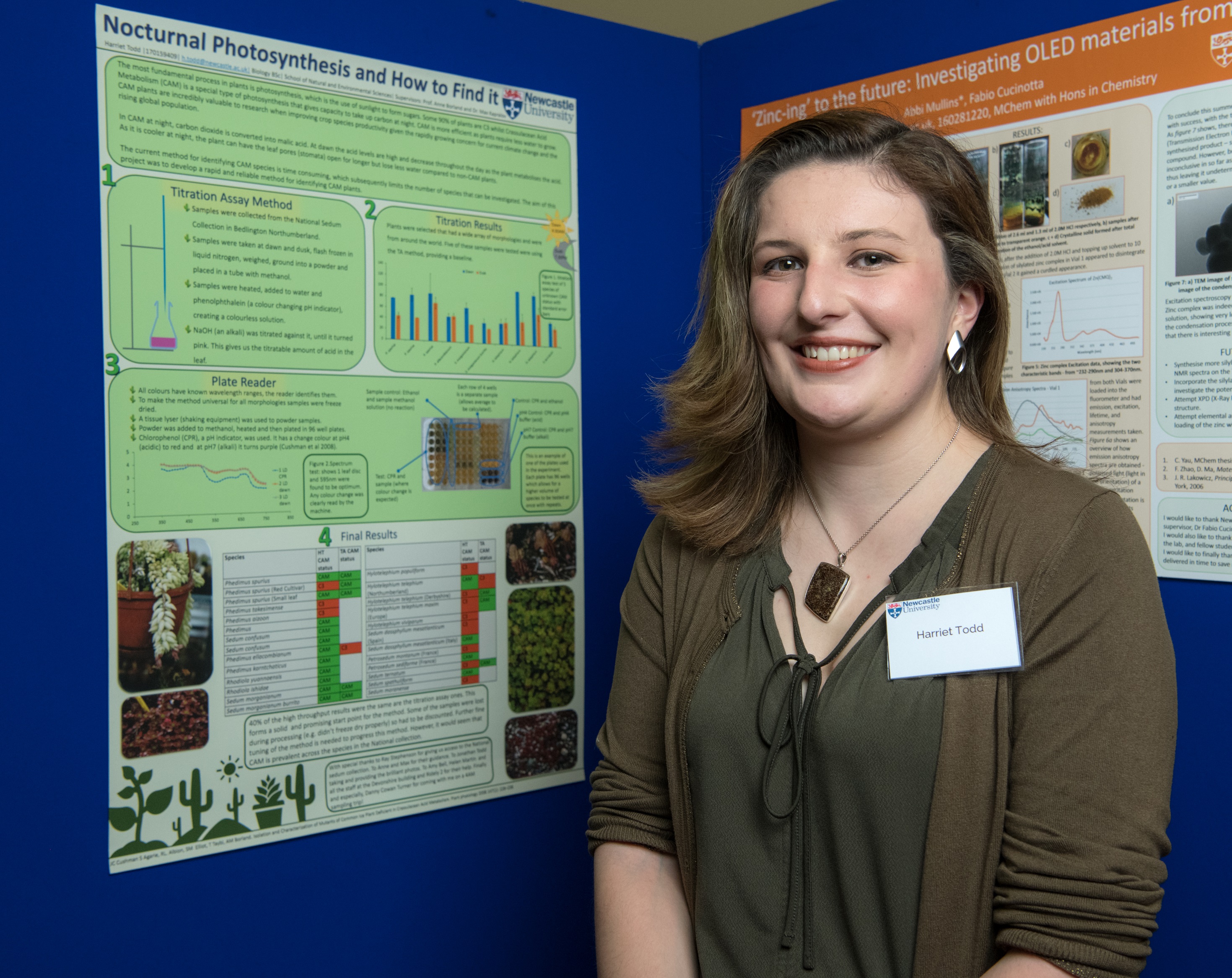2019 participants
 Harriet Todd
Harriet Todd
Crassulacean acid metabolism (CAM) is a nocturnal photosynthesis that evolved to save water. Given the rising population and climate change there is a demand to make crops more water efficient. Hence, engineering CAM into crops could provide a solution for global food security. It is unknown how widespread CAM is across the plant kingdom. This study was to develop a high throughput method of screening plants for CAM. To test this method, we used the National Collection of Sedum found in Bedlington which contains succulents from across the world and it is the largest of its kind in the UK. The current methods for screening CAM, whilst accurate, are time consuming and low throughput. Here we have developed a promising high throughput method for screening species for CAM identification.
Funding source: Newcastle University
Project supervisor: Dr Maxim Kapralov and Professor Anne Borland
